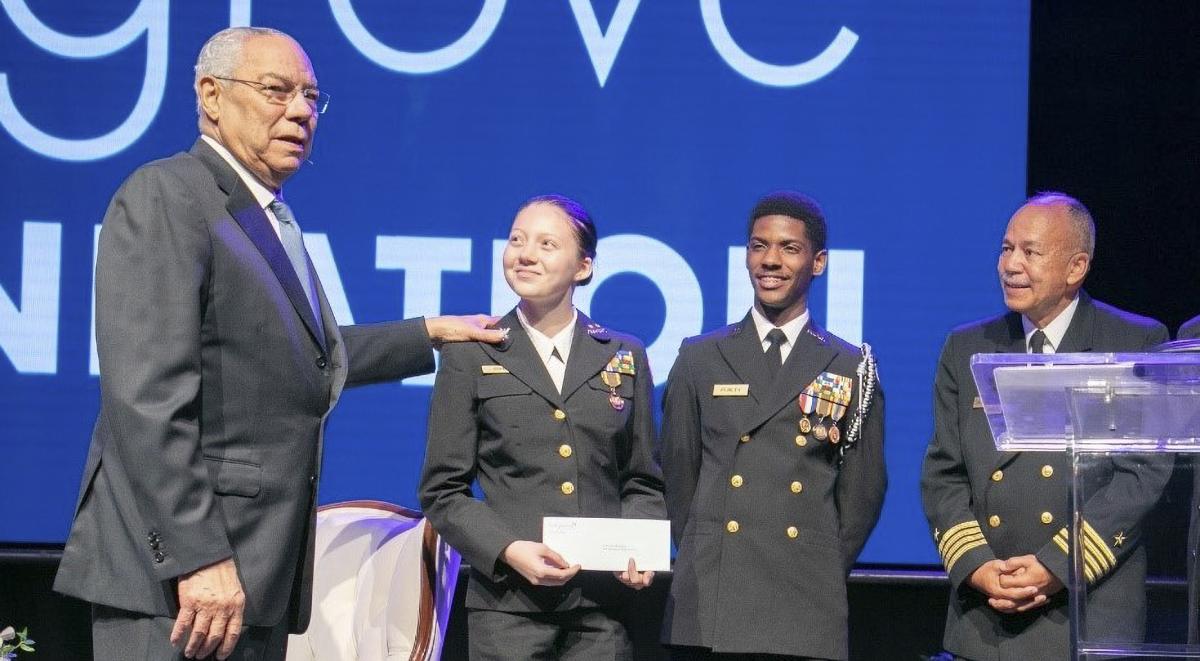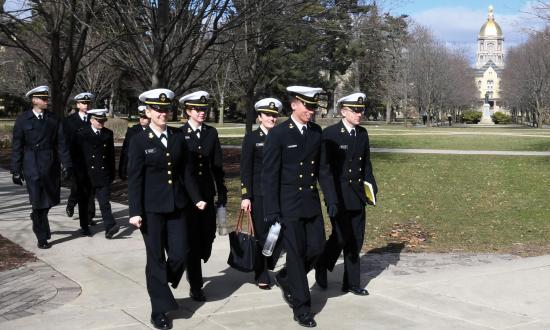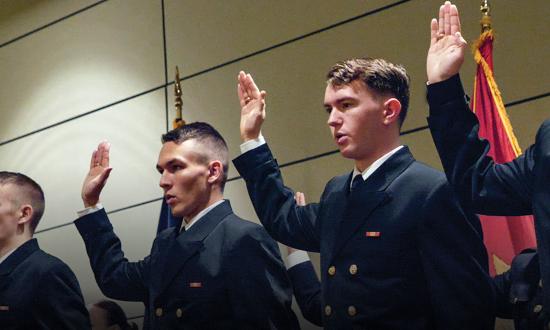In June 1992, while serving as the first African American Chairman of the Joint Chiefs of Staff, General Colin Powell recommended expanding the Junior ROTC program, calling it “the best opportunity for the Department of Defense to make a positive impact on the Nation’s youth.”1 Coincidentally, during the same time frame, while assigned to the Pentagon as an action officer, I had the opportunity to meet former Chief of Naval Operations Admiral Elmo Zumwalt at a Surface Navy Association luncheon. I was able to thank him for Z-Gram #66, “Equal Opportunity in the Navy,” and let him know that his Z-Gram and my late father’s service as a ship’s cook in a segregated Navy during World War II on board the USS Outagamie (LST-1073) were my motivation for a career as a commissioned naval officer.
Fast forward to 2019, during my second career as a senior naval science instructor at WP Davidson High in Alabama. Two of my rising-star NJROTC cadets and I were humbled to experience the sustained JROTC leadership and commitment from General Powell by way of a Hargrove Foundation JROTC grant to one of the most successful Department of Defense (DoD) diversity programs.
‘A Social Bargain’
A few years ago, after Mississippi’s Jackson Public Schools (JPS) was nearly taken over by the state Department of Education, the newspaper Northside Sun published an article synopsizing the value of JROTC, especially for minority students: “It is worth highlighting an old program within JPS that excels at the highest level—the Junior Reserve Officer’s Training Corps. In the critical metrics, graduation rates, JROTC achieved 95 percent, far surpassing JPS’ 70 percent, Mississippi’s 83 percent, and the national high school rate of 84 percent. . . . JROTC cadets also outperform in daily attendance, grade point average, ACT scores, and acceptance to institutions of higher learning.”2 In General Powell’s 1995 book, My American Journey, he explained, “Inner-city kids, many from broken homes, found stability and role models in Junior ROTC. They got a taste of discipline, the work ethic, and they experienced pride of membership in something healthier than a gang. . . . College level ROTC quite literally made my life. The junior program can provide a fresh start in life for thousands of endangered kids, particularly those from minorities living in crime-plagued ghettos. Junior ROTC is a social bargain.”3
Expand JROTC
There are more than 500,000 students participating in some 3,400 JROTC units across the country and in DoD schools overseas. In 2006 and 2008, Congress directed the service secretaries to grow the program to a targeted 3,700 units by 30 September 2020.4 Unfortunately, that goal was not met. Consequently, the military departments should consider the following recommendations in response to calls for more diversity leadership:
- Declare expanding the JROTC program to the target goal of 3,700 a top DoD priority.
- Offer retired service members who serve as JROTC instructors a “Troops to Teachers” transition bonus of $10,000 for noncommissioned officers and $5,000 for commissioned officers on completion of their first school year of service.
- Provide JROTC instructors an annual coach’s stipend.
- Subsidize brick-and-mortar stand-alone JROTC facilities at schools for larger, 150-plus student, three instructor units.
At the close of his book, It Worked for Me: In Life and Leadership, General Powell notes, “The only thing of momentous value we leave behind is the next generation, our kids—all our kids. We need to work together to give them the gift of a good start in life.”5
1. Col John W. Corbett, USA, “The Demand for Junior Reserve Officer Training Corps in American High Schools,” Defense Report, July 1998.
2. Ashby Foote, “JPS ROTC Should Be Expanded,” The Northside Sun, 12 July 2018.
3. Colin Powell, My American Journey (New York: Ballantine Books, 1995), 555–56.
4. Congressional Research Service, “Defense Primer: Junior Reserve Officer’s Training Corps (JROTC),” 7 January 2020.
5. Colin Powell, It Worked for Me: In Life and Leadership (New York: Harper, 2012), 276.






